After a 28 year dry spell, the jazz biopic returns, with films about trumpet legends Chet Baker (Born to Be Blue) and Miles Davis (Miles Ahead). Fortunately, neither Born to Be Blue nor Miles Ahead slavishly follow the conventional biopic narrative of a genius making it big.
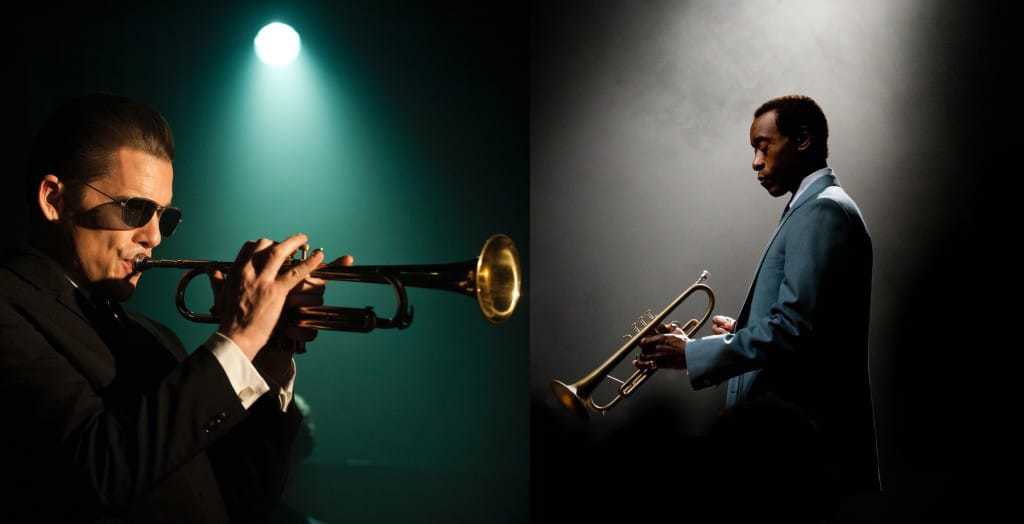
Of the very few films about jazz, almost all of them are biopics about the greats. In the 1980s, Clint Eastwood made the Charlie Parker film Bird and Bertrand Tavernier made Round Midnight, a fictionalized account of the real-life story of Lester Young and Bud Powell. After a 28 year dry spell, the jazz biopic returns, with films about trumpet legends Chet Baker (Born to Be Blue) and Miles Davis (Miles Ahead) opening back-to-back. While it’s certainly true that many musical geniuses of jazz have yet to get their cinematic due, this recent deluge of jazz biopics invites us to question why this is the chosen genre for telling jazz stories.
Fortunately, neither Born to Be Blue nor Miles Ahead slavishly follow the conventional biopic narrative of a genius making it big. Both films take place after the musicians had achieved fame and acclaim. Instead, the films are about the stars’ comebacks — inviting us to see the space between the man and the legend. In Miles Ahead, Miles (Don Cheadle) is a womanizing junkie and recluse who hasn’t produced anything for six years. In Born To Be Blue, Chet Baker (Ethan Hawke) is a drug addict recovering from a severe beating, which lost him most of his teeth and the ability to play. Miles is chased down by a Rolling Stone journalist who wants to interview him about his comeback, which precipitates flashbacks; Chet is making a movie about his own life, which forces him to reflect on what it means to be the Chet Baker when he has to learn how to play like Chet Baker all over again.
As a black man, Miles constantly finds himself butting up against white power: white men run the record company, book the gigs, and control his purse strings. Even when he’s headlining a show, he’s at the mercy of the white police who are ready to arrest him for walking while black. The clean-shaven, suit-wearing young Miles must hold in his anger when he’s treated as a second class citizen — even as white people eat up his music. It’s a far cry from the Miles of the 1970s with long hair and colourful, showy outfits. Chet Baker, on the other hand, never felt quite at home as a white man playing traditionally black music. The film suggests that he got hooked on drugs in an attempt to fit in with his peers and to soothe his feeling that he wasn’t worthy.
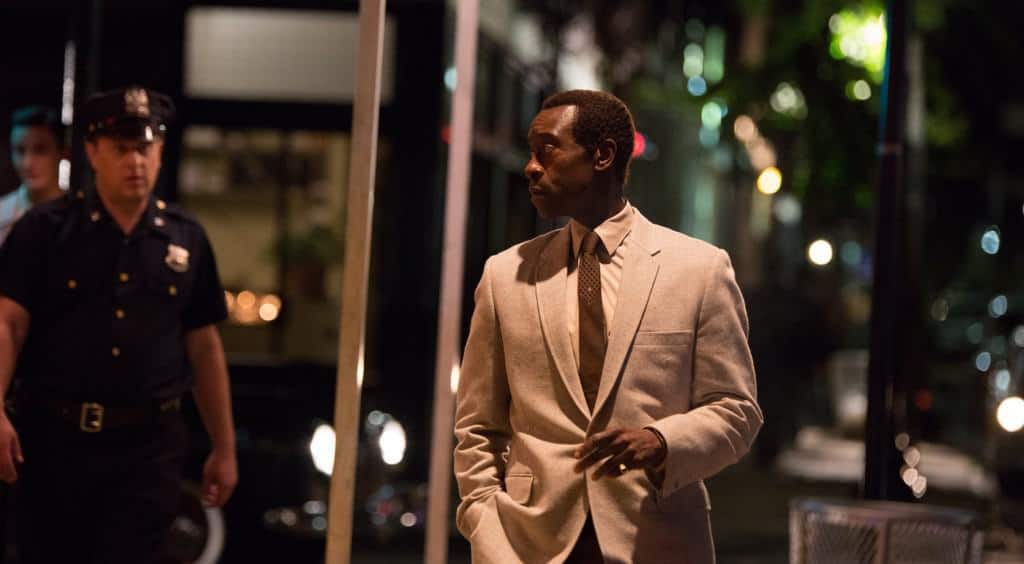
Most importantly, these biopics are all about the music — both in story and in technique. Although we don’t get to see Miles play much in the film, Director Don Cheadle invokes the spirit of Davis’ music and freeform improvisation through his film grammar. As a musician, Davis played with practically every jazz subgenre, inventing a few of his own along the way, so it’s fitting that the camera is as playful as his music was. The film moves freely between flashbacks, memories, and present day scenes, allowing each to bleed into the others. It’s energetic filmmaking, even if it’s often messy.
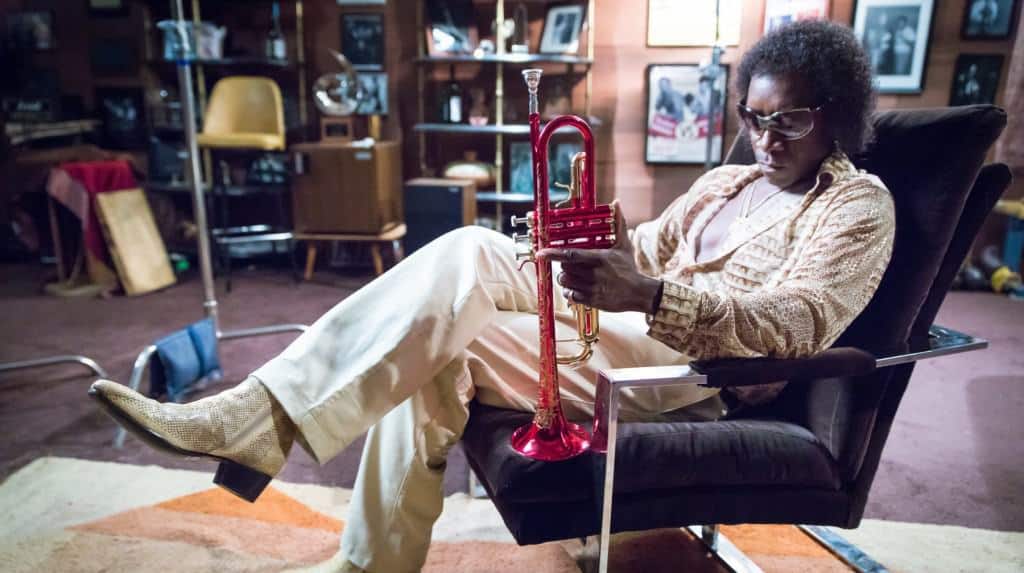
Director Robert Budreau’s style is more controlled, bathing the characters in blue light, placing them in cool yellow and blue surroundings, and keeping the camera much more still. As Baker was a pioneer of West Coast “cool jazz”, it’s a fitting aesthetic for his story. Baker’s flashbacks are classic in black-and-white and in brief scenes of just a few seconds, seemingly taken from the film he was shooting of his life: these aren’t memories so much as ideas about how he saw himself.
Budreau dedicates significant screen time to the hard work that goes into playing music. Once Chet loses his embouchure — the muscles around the mouth needed to make sound on the trumpet — from his injury, Budreau captures the laborious process of re-learning how to play and rediscovering his sound. Chet’s first attempt to play leaves him covered in blood. As he heals and gets dentures, he’s slowly able to play longer, though he’ll touch his face in pain afterward. Whether it’s in the corn fields of his parents’ farm in the dusk of fall or the midday winter surrounded by snow, or sitting on top of the winnebago he shares with his girlfriend, he practices everywhere, desperate to get his groove back.
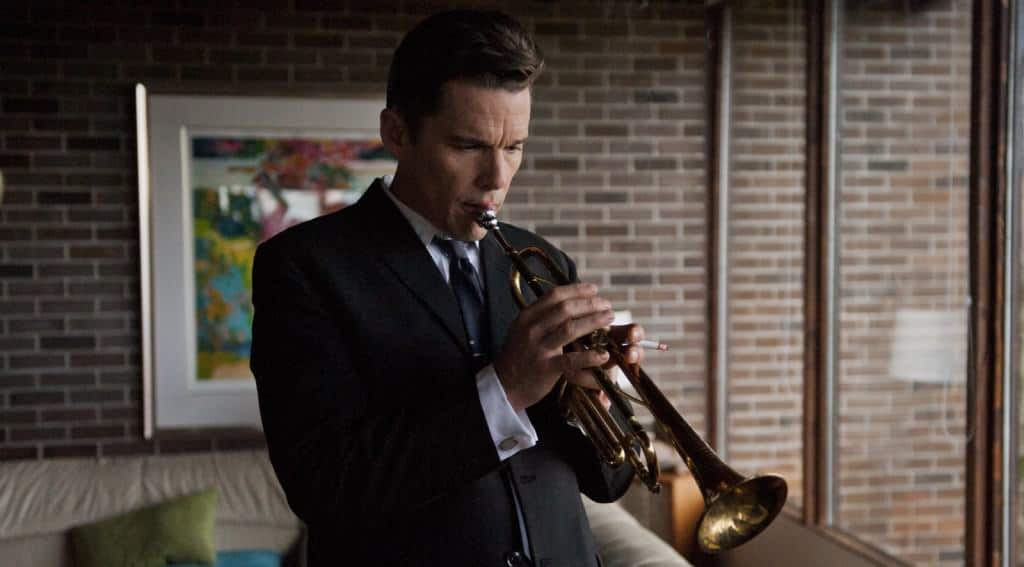
Like Miles, so much of Chet’s self-esteem is tied up in his music and his ability to play. When he has a jam session with the house band at a local restaurant, and they suggest he practice more on his own before their next gig, it’s devastating. But he takes it all in stride, never talking back, because playing with a band is so key to his happiness. Budreau wisely shows a different side of Chet during his performances: his music is an outlet for expression, a necessity, and not just a ticket to celebrity. When he sings and plays a rendition of “My Funny Valentine” at a small concert for record executives, it comes straight from the heart: his voice is cracking and he’s looking at the woman he loves with gratitude and devotion.
Although Miles Ahead and Born to Be Blue break free of biopic conventions in many ways, both use a loyal love interest as a crutch for the film’s emotional weight. Where it’s frustrating in Miles Ahead, it’s illuminating and touching in Born to Be Blue. Miles spends the film wistfully reminiscing about his ex-wife Frances (Emayatzy Corinealdi, Middle of Nowhere). Because she’s only in the film as a part of his memory, she’s depicted as a saint, a gorgeous professional dancer who gave up everything for a life of domesticity she didn’t want. Perhaps because of the racism Davis faced, he needed to feel dominant in his home; he was emotionally and physically abusive, and his angelic wife eventually left him.
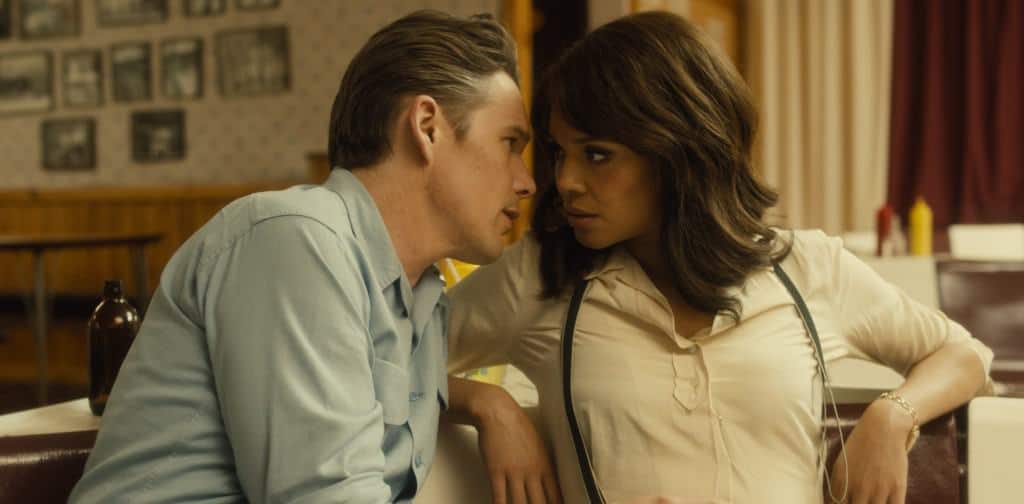
Chet’s relationship with his love interest Jane (a marvelous Carmen Ejogo) in Born to Be Blue is more complex and nuanced. Because it plays out in the present, he’s forced to contend with Jane as she really is: a smart, independent woman who may be willing to support him but who demands respect in return. The film is as much about how Chet’s relationship with Jane shapes him as it is about the man himself. She makes him want to be better, to get clean, to stay out of prison, and to play again. She won’t stay with a junkie, so he goes off heroin in favour of methodone, on his parole officer’s recommendation, and he even manages to hold down a job. He needs endless support and empathy from her, but theirs is a relationship of equals. She’s struggling to make it, too, and she knows enough about the music that he can’t talk down to her.
Both films are, in a way, the story of a descent. Miles is forced to contend with the fact that he hasn’t made anything of worth in some time and maybe never will again. Chet hits rock bottom early in the film when he gets beaten up by his drug dealer. He works hard, but it’s never clear that it will really pay off. In the end, he feels like he has to choose between being the best version of himself — the clean man with Jane — and what he thinks of as the only route to being the old Chet Baker again, which requires drugs. Even as the closing title cards remind us that Baker made the best music of his career after the film ends, the choices he made to get there are damning.

